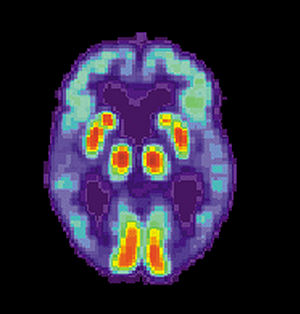 Image via WikipediaGlutamatergic Neurons in Rodent Models Respond to Nanoscale Particulate Urban Air Pollutants In Vivo and In Vitro (31 page pdf, Todd E Morgan, David A Davis, Nahoko Iwata, Jeremy A Tanner, David Snyder, Zhi Ning, Winnie Kam, Yu-Tien Hsu, Jeremy W Winkler, Jiu-Chiuan Chen, Nicos A Petasis, Michel Baudry, Constantinos Sioutas, Caleb E Finch, Environmental Health Perspectives, Apr. 7, 2011)
Image via WikipediaGlutamatergic Neurons in Rodent Models Respond to Nanoscale Particulate Urban Air Pollutants In Vivo and In Vitro (31 page pdf, Todd E Morgan, David A Davis, Nahoko Iwata, Jeremy A Tanner, David Snyder, Zhi Ning, Winnie Kam, Yu-Tien Hsu, Jeremy W Winkler, Jiu-Chiuan Chen, Nicos A Petasis, Michel Baudry, Constantinos Sioutas, Caleb E Finch, Environmental Health Perspectives, Apr. 7, 2011)Also discussed here: Freeway air bad for mouse brain (Science Blog, Apr. 7, 2011)
Although today’s review article is highly technical and the result of experiments conducted on mice, the implications for the impact of nano-sized vehicle emissions on human brain development is clear. “The evident neurotoxicity of nPM suggests links between urban air pollution and brain health across the lifespan”. Two areas need further study: definition for nano particles within the Ultra Fine Particle (UFP) category of air quality standards and the accumulation of nPM in the brain over time.
Key Quotes:
“cognitive functions are vulnerable to airborne pollutant exposure across the lifespan. In older women, low cognitive function was associated with proximity to vehicular traffic.. middle-aged adults, lower cognitive performance was associated with exposure to ozone. Cognitive impairments of school-age children have been associated with exposure to black carbon”
“it is clear that the inhaled particle size is critical: the nano-size class of PM (< 200 nm) from engineered materials had the greatest toxicity and uptake by vascular and brain cells”
“Inhaled nPM can act on the brain directly and indirectly. Direct entry of inhaled nPM may occur via transport by olfactory neurons from the nasal mucosa.. Another possible route is though peripheral monocytes, which regularly enter the pool of brain microglia, with enhanced entry during peripheral inflammation”
“We therefore studied neuronal cell responses to nPM in vivo after chronic exposure for 10 weeks, using a new technique of re-aerosolized nPM collected from urban freeway air for 30 days”
“These in vitro models suggest that nPM has both direct neurotoxicity through glutamatergic mechanisms and indirect neurotoxicity through glial secretions”
“after short-term exposure to vehicle pollution, mice showed significant brain damage — including signs associated with memory loss and Alzheimer’s disease.”
“An important unknown is the actual brain accumulation of inhaled PM, which may be transported inside the brain by olfactory neurons from the nasal mucosa”
“It’s a long-term global project to reduce the amount of nanoparticles around the world. Whether we clean up our cars, we still have to clean up our power generation.”
Related articles
- Tiny Particles Of Burning Fossil Fuel, Car Parts And Pavement Bits Damage Brains Of Mice (medicalnewstoday.com)
- Transphorm (pollutionfree.wordpress.com)
- Neurons grow into semiconductor tubes: future intelligent chips? (braincubix.com)
- Freeway Air Bad for Mouse Brain (neurosciencenews.com)
- Proximity to Traffic Air Pollution and Birth Outcomes (pollutionfree.wordpress.com)
- More Air Pollution controls would save a lot of lives and money - Air pollution deaths similar to World War 2 military deaths each year (nextbigfuture.com)
- Freeway pollution causes brain damage in mice-study (reuters.com)
- Freeway Air Pollution May Cause Brain Damage (treehugger.com)
- Diesel Emissions and Lung Damage (pollutionfree.wordpress.com)

No comments:
Post a Comment